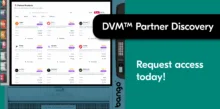Life beyond the app store, developers look to go direct
by Sukey Miller

With the intense coverage that mobile applications continue to attract, the content developers are already starting to investigate alternative distribution channels to the App “Stores” themselves. In the rush to follow the now crowded mobile apps market, developers are starting to realise that after all their efforts to build a mobile app, to get noticed and survive they need to look beyond the app store.
Distribution is no longer about being in the top 10 – almost impossible amongst such fierce competition and undocumented selection methods by store managers. It is now about maximizing distribution and revenues. This is precisely what a recent survey by Bango uncovered. Bango surveyed over 400 developers and content providers in the USA and Europe, and the results revealed:
• 45% of developers plan to monetize their apps directly, in other words outside the app store
• 48% think that although app stores will grow in importance in five years time, these channels will coexist alongside the mobile web
• iPhone tops the list, followed by Android and BlackBerry, for the most important handset/platform to develop an app for in 2010
• Windows Mobile, Palm and Symbian also listed as an important development platform
This doesn’t come as a surprise, as fragmentation in mobile platforms increases the challenge of reaching a mobile audience. With mobile web browser capabilities continuing to improve many are starting to see the benefits of browser-based distribution, over which they have more control.
However, as a distribution channel, Nokia’s Ovi store lags behind and hardly gets a mention in the list. Despite their many attempts to develop a successful app store, the journey for Nokia to achieve this has been very testing. For consumers, as with many other app stores, the Ovi checkout process can be a frustrating experience. In order to purchase content, you must pre-register details on multiple pages to complete the task and make the payment.
Another absentee from the list is Vodafone’s “360” app store. Vodafone is aiming to attract the attention of its 315million subscribers, but as of the date of writing, there are only a few devices supported – It recently announced that it expects 2m 360-capable handsets by the end of March. As many developers know so well, fragmentation is a major headache and Vodafone – which supports the iPhone store, Google’s Android marketplace, the Ovi store and now its own app channel, will need to determine if yet another app store helps move more developers into the mobile marketplace.
What the Bango survey does show is that developers are already looking beyond the app store, and want to reach their customers directly. This is good news for the long-term prospects of the mobile industry and for the billions of customers who eagerly await the next best app.
![]()
Subscribe to our newsletter
Get the latest subscription bundling news and insights delivered straight to your inbox.



